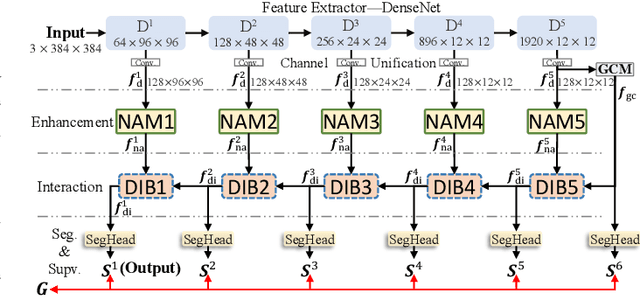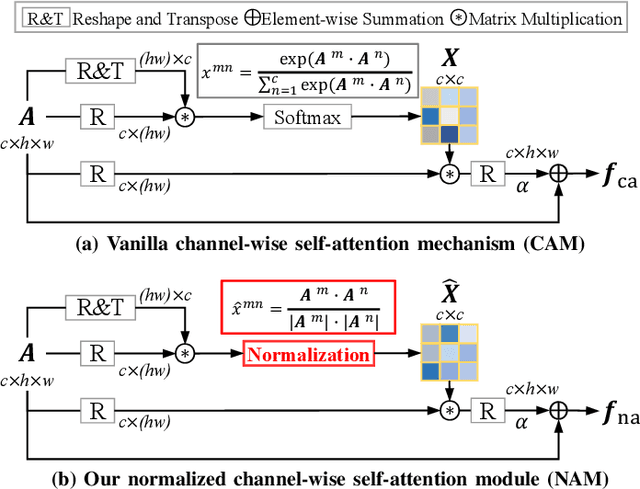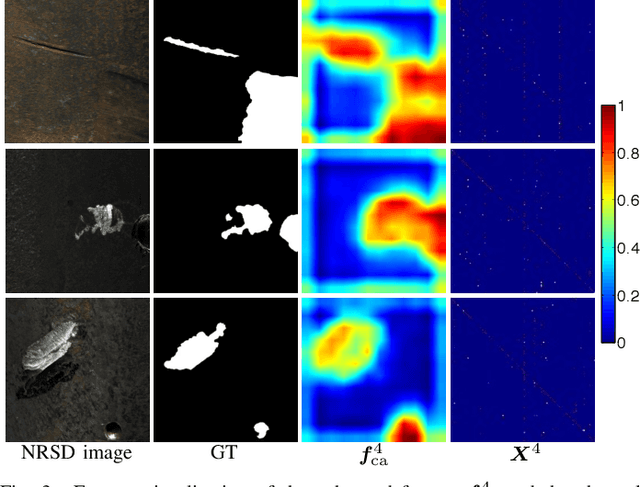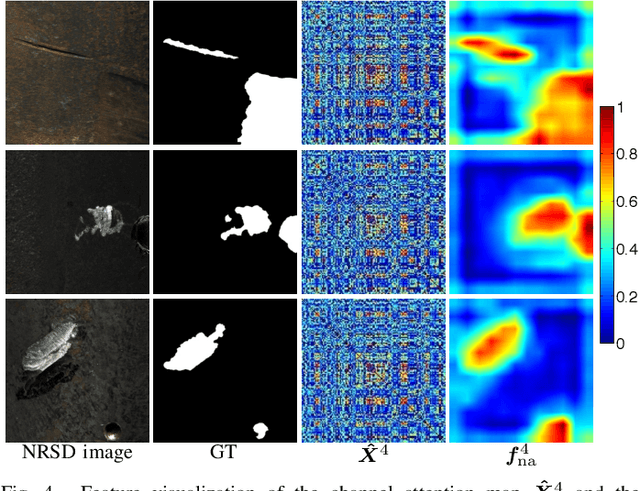Chengjun Han
No-Service Rail Surface Defect Segmentation via Normalized Attention and Dual-scale Interaction
Jun 27, 2023



Abstract:No-service rail surface defect (NRSD) segmentation is an essential way for perceiving the quality of no-service rails. However, due to the complex and diverse outlines and low-contrast textures of no-service rails, existing natural image segmentation methods cannot achieve promising performance in NRSD images, especially in some unique and challenging NRSD scenes. To this end, in this paper, we propose a novel segmentation network for NRSDs based on Normalized Attention and Dual-scale Interaction, named NaDiNet. Specifically, NaDiNet follows the enhancement-interaction paradigm. The Normalized Channel-wise Self-Attention Module (NAM) and the Dual-scale Interaction Block (DIB) are two key components of NaDiNet. NAM is a specific extension of the channel-wise self-attention mechanism (CAM) to enhance features extracted from low-contrast NRSD images. The softmax layer in CAM will produce very small correlation coefficients which are not conducive to low-contrast feature enhancement. Instead, in NAM, we directly calculate the normalized correlation coefficient between channels to enlarge the feature differentiation. DIB is specifically designed for the feature interaction of the enhanced features. It has two interaction branches with dual scales, one for fine-grained clues and the other for coarse-grained clues. With both branches working together, DIB can perceive defect regions of different granularities. With these modules working together, our NaDiNet can generate accurate segmentation map. Extensive experiments on the public NRSD-MN dataset with man-made and natural NRSDs demonstrate that our proposed NaDiNet with various backbones (i.e., VGG, ResNet, and DenseNet) consistently outperforms 10 state-of-the-art methods. The code and results of our method are available at https://github.com/monxxcn/NaDiNet.
 Add to Chrome
Add to Chrome Add to Firefox
Add to Firefox Add to Edge
Add to Edge